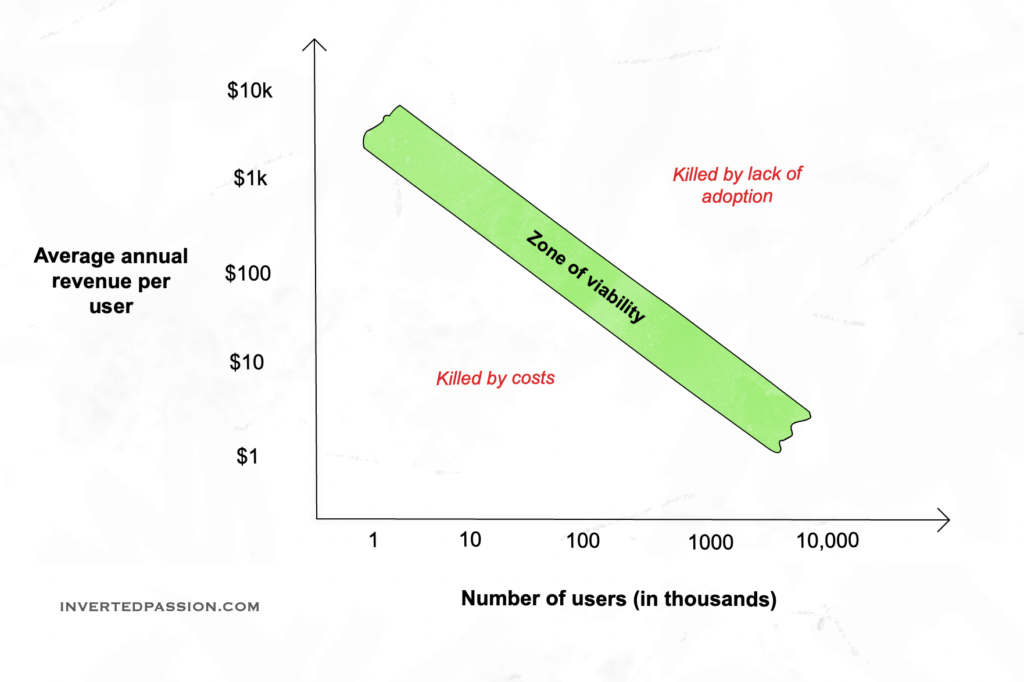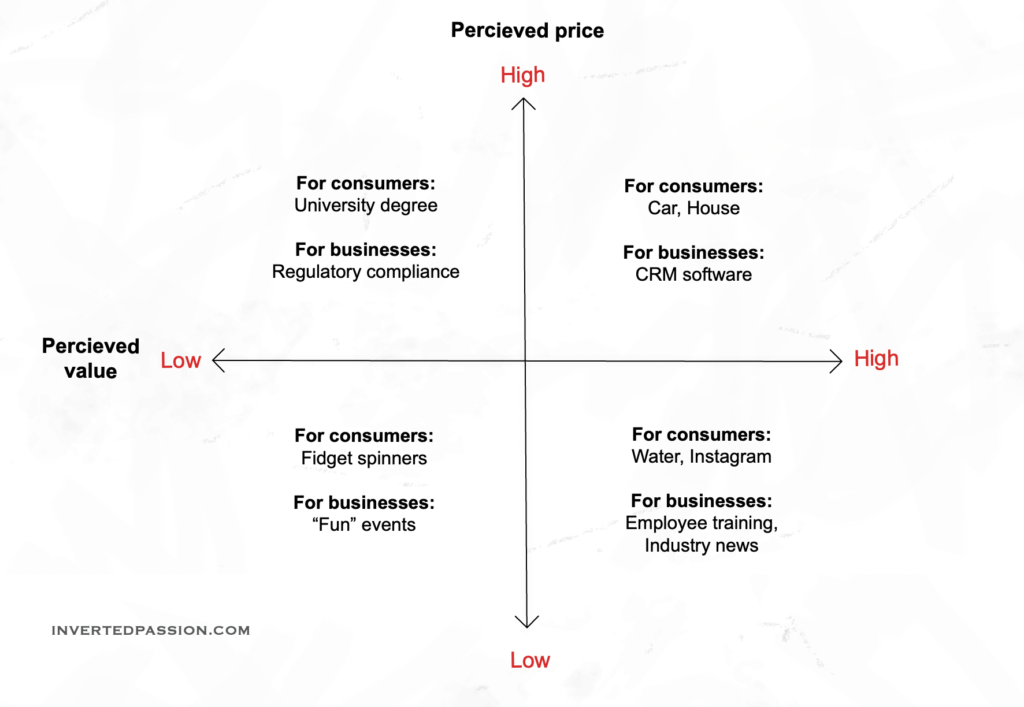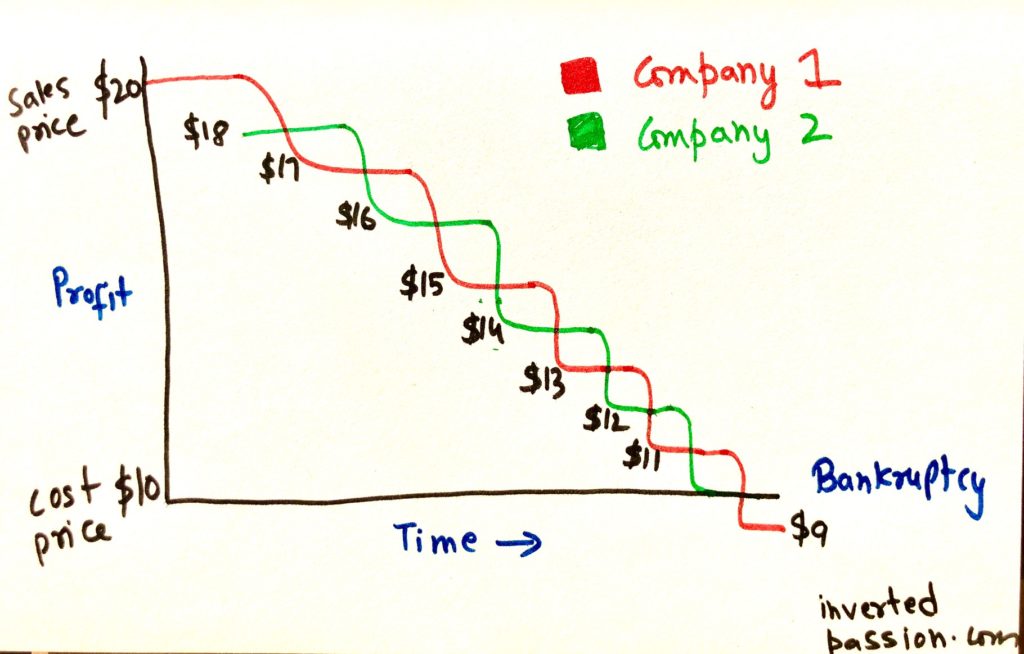The price of products determines all other components of the business. This happens because price influences the number and type of available customers in the market (higher the price, lower the number of customers and the corresponding premium positioning that’s required).
This in turn determines:
- the distribution channels you need to tap in order to reach the target market,
- cost of customer acquisition,
- cost and nature of sales and service process, and
- all that in turn determines the organizational structure.
In short, setting the price of a product is akin to choosing a highly specific playbook for building your business.

This tight relationship between price and business model suggests that a mismatch between the two means failure. The most obvious case is keeping the price low for a market that has a limited number of customers. The limited revenue opportunity means that a startup can easily get killed by costs. The other case is keeping a price higher for a market that has a very large number of customers. In such cases, competition usually drives the price down and a higher price usually means slower or no adoption of that product which can result in failure. ...

